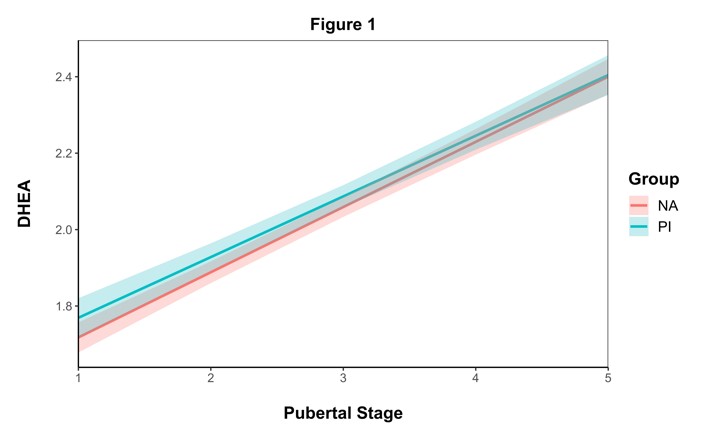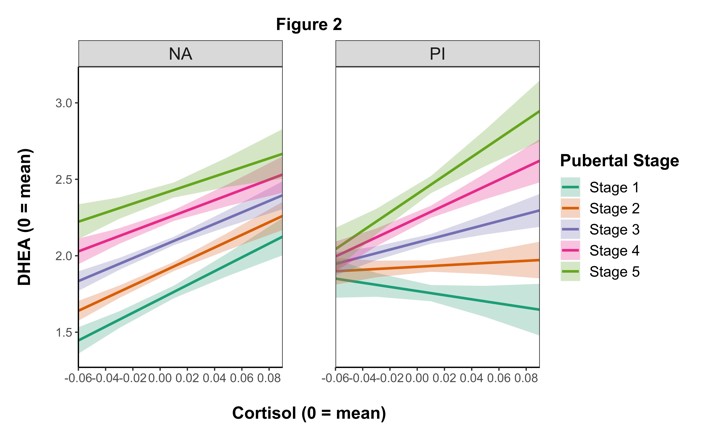By Megan Gunnar and Mariann Howland
The Puberty Study continues to provide important insights in the changes with puberty that allow recalibration of stress biology for youth who experienced early adversity due to being reared in institutions (orphanages) prior to adoption. We term them previously institutionalized or PI youth. In our most recent analysis, we examined the production of a hormone called, dehydroepiandrosterone, or DHEA. This is a mild androgen that is produced by the cortex (outer part) of the adrenal gland. This androgen begins to elevate in both boys and girls early in puberty and leads the pubertal sequence. You know it as the hormone that produces pubic hair and changes body odor in both sexes. Not surprisingly, given its function, DHEA increases more and more as puberty progresses. DHEA also responds to stress and is usually correlated with the production of cortisol, a hormone that is often thought of as “the” stress hormone. Cortisol is also produced by the cortex of the adrenal gland.
As we reported last year, in our Pubertal Recalibration Study we found that the cortisol response to delivering a speech in front of judges, while being filmed and then doing math all while being judged, was non-existent at the beginning of puberty for our PI youth. This is consistent with other studies showing that chronic deprivation in infancy blunts the body’s ability to produce cortisol resulting in hypocortisolism. However, we found that as puberty progressed, the PI youth increasingly showed a normal cortisol stress response.
What about DHEA? Would it act like cortisol? To our surprise, it doesn’t. First, we found no difference between PI and non-adopted (NA) comparison youth for DHEA. It increases with pubertal development irrespective of early life conditions (see Figure 1). Furthermore, with puberty the association between DHEA and cortisol increases in the PI youth until it is as tightly coupled in PI youth as it is in NA comparison youth (see Figure 2). What we think this is telling us is that recalibration of the cortisol response may be located in the adrenal cortex and not necessarily in the brain that controls the adrenal gland.





